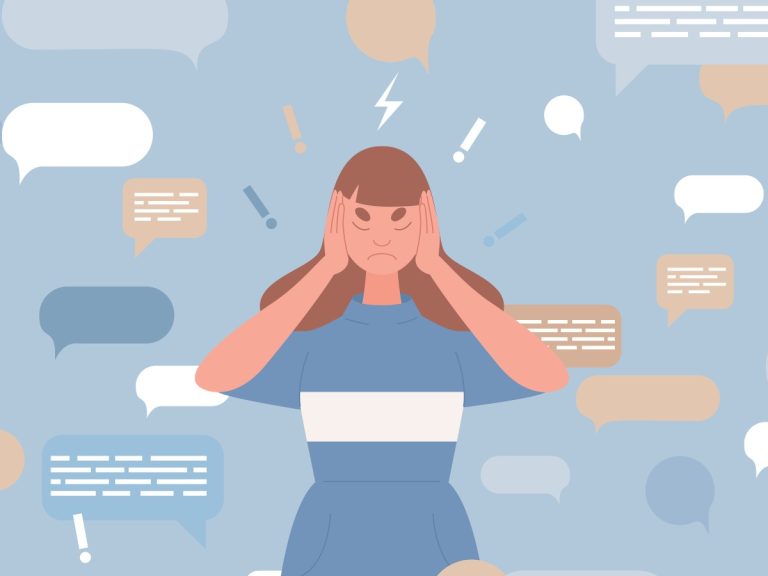The Rising Tide of Misinformation: Navigating the Blurred Lines Between Fact and Fiction
In an era dominated by the rapid dissemination of information through social media and the rise of sophisticated technologies like artificial intelligence, the line between truth and falsehood has become increasingly blurred. Recent events, from the viral spread of AI-generated deepfakes of natural disasters to the resignation of a top US vaccine regulator citing misinformation campaigns, underscore the growing threat of misinformation and disinformation in the digital age. These fabricated narratives not only erode public trust in institutions but also pose significant risks to public health, political stability, and democratic processes. The proliferation of false information, coupled with the decline of fact-checking initiatives by major social media platforms like Meta, raises serious concerns about the future of online discourse and the ability of individuals to discern fact from fiction.
The decision by Meta to scale back its fact-checking efforts is a particularly alarming development, potentially setting a dangerous precedent for other tech companies. This move effectively shifts the burden of verifying information onto individual users, an impractical task given the sheer volume of content generated daily. Experts warn that the absence of dedicated fact-checking mechanisms could transform social media platforms into breeding grounds for misinformation, allowing false narratives to spread unchecked and potentially influencing critical decisions related to public health, elections, and social attitudes. The potential for a "race to the bottom" among social media platforms, where prioritizing engagement over accuracy becomes the norm, is a grave concern.
The power of misinformation lies not only in its volume but also in its sophisticated presentation. Emotionally charged content, designed to evoke outrage or fear, often spreads more rapidly than factual information. Moreover, the rise of deepfakes, AI-generated videos that can convincingly portray individuals saying or doing things they never did, adds another layer of complexity to the challenge of identifying falsehoods. These sophisticated manipulations can be used to discredit individuals, spread false narratives, and sow discord, further eroding trust in credible sources and institutions.
The consequences of widespread misinformation are far-reaching. The COVID-19 pandemic provided a stark example of how false information about vaccines can rapidly spread online, undermining public health efforts and fueling vaccine hesitancy. Similarly, misinformation campaigns targeting scientific consensus, such as those related to climate change or the dangers of certain chemicals, can create confusion and delay action on critical issues. The erosion of trust in traditional news sources, scientific institutions, and government agencies creates fertile ground for conspiracy theories, political polarization, and even violence.
While fact-checking and content moderation are important tools in combating misinformation, they face significant limitations. The sheer volume of content uploaded to platforms every minute makes it impossible for human moderators to effectively review everything. Furthermore, the emotionally taxing nature of this work can lead to moderator burnout and trauma. While AI-driven moderation tools offer some assistance, they often struggle with nuance, context, and satire, resulting in inconsistent enforcement. The perception of bias in content moderation also presents a challenge, as users whose content is removed may cry censorship, further eroding trust in platforms.
Addressing the complex challenge of misinformation requires a multi-faceted approach involving education, regulation, and technological innovation. Governments and regulatory bodies must hold platforms accountable for prioritizing accurate information and combating the spread of misinformation. Algorithmic transparency and responsible content moderation are crucial to ensure that users are not bombarded with misleading or harmful content. Regulations, such as the EU’s Digital Services Act, can play a vital role in obligating platforms to take concrete steps against the dissemination of fake news and hate speech.
Digital literacy education is another crucial component in the fight against misinformation. Teaching individuals how to critically evaluate information, identify misleading content, and differentiate between credible and unreliable sources is essential. Integrating media literacy education into school curricula from an early age can empower future generations to navigate the complex information landscape. Public awareness campaigns and accessible digital literacy resources can further enhance individuals’ ability to assess information online. Fostering a healthy skepticism without succumbing to cynicism is key – encouraging individuals to question information while avoiding the trap of dismissing all sources as equally unreliable.
Traditional news and media outlets also bear a responsibility in combating misinformation. Journalists have a crucial role to play in separating fact from fiction and providing accurate, verified information to the public. Initiatives like BBC Verify and RTÉ Clarity represent positive steps in this direction, demonstrating a commitment to fact-checking and providing context to complex issues. Prioritizing factual reporting over sensationalized content is vital in maintaining public trust and ensuring that audiences have access to reliable information.
The battle against misinformation is ongoing and requires a collective effort. By combining regulatory measures, technological advancements, and educational initiatives, we can empower individuals to critically evaluate information and navigate the increasingly complex digital landscape. While there is no silver bullet solution, a multi-pronged approach offers hope in combating the spread of false narratives and preserving trust in credible sources of information. As we move forward, it is essential to prioritize accuracy, transparency, and critical thinking to ensure a well-informed and empowered citizenry.


